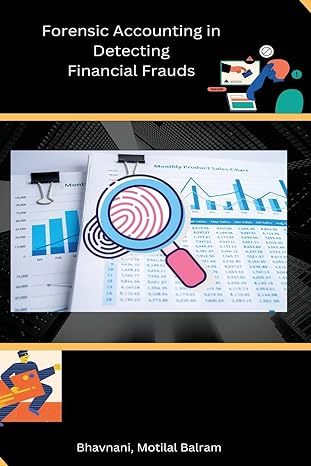Answered step by step
Verified Expert Solution
Question
1 Approved Answer
Lou Barlow, a divisional manager for Sage Company, has an opportunity to manufacture and sell one of two new products for a five-year period. His
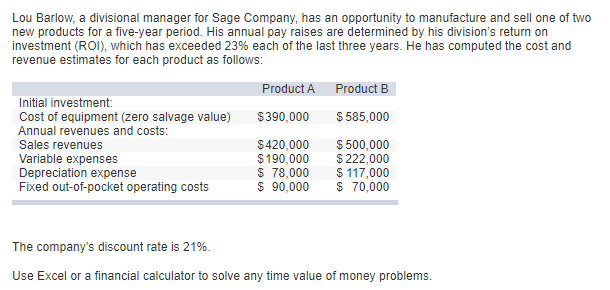
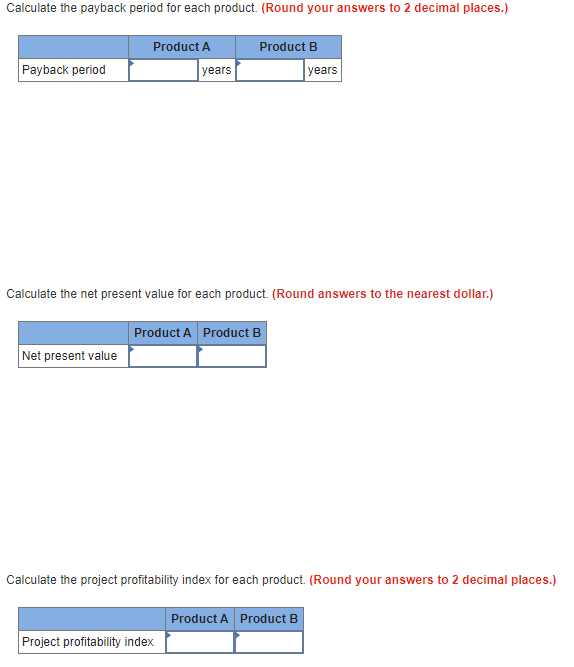
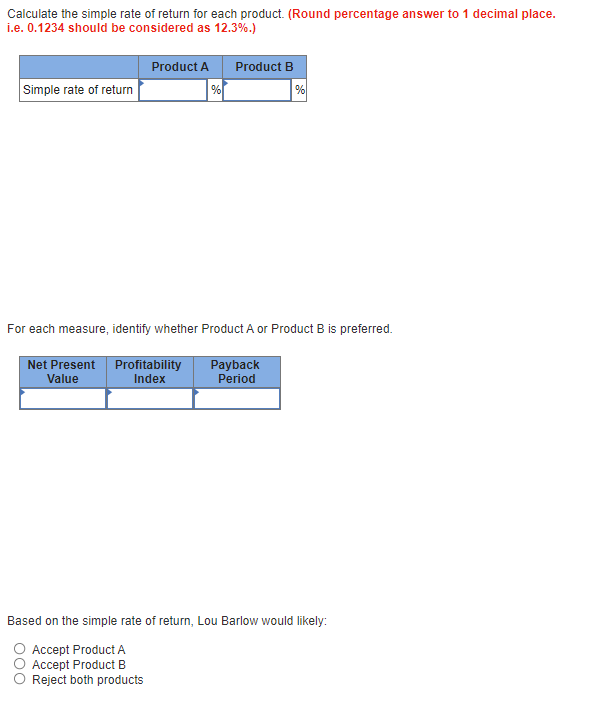
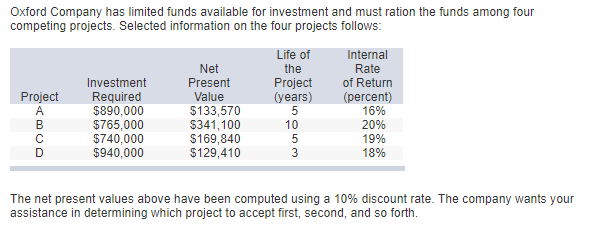
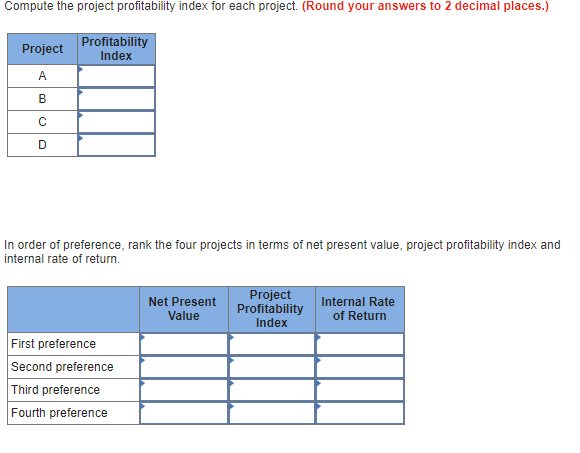
Lou Barlow, a divisional manager for Sage Company, has an opportunity to manufacture and sell one of two new products for a five-year period. His annual pay raises are determined by his division's return on investment (ROI), which has exceeded 23% each of the last three years. He has computed the cost and revenue estimates for each product as follows: Product A Product B Initial investment: Cost of equipment (zero salvage value) $390,000 $ 585,000 Annual revenues and costs: Sales revenues $420,000 $ 500,000 Variable expenses $190,000 $ 222,000 Depreciation expense $ 78,000 $ 117,000 Fixed out-of-pocket operating costs $ 90,000 $ 70,000 The company's discount rate is 21%. Use Excel or a financial calculator to solve any time value of money problems. Calculate the payback period for each product. (Round your answers to 2 decimal places.) Product A years Product B years Payback period Calculate the net present value for each product. (Round answers to the nearest dollar.) Product A Product B Net present value Calculate the project profitability index for each product. (Round your answers to 2 decimal places.) Product A Product B Project profitability index Calculate the simple rate of return for each product. (Round percentage answer to 1 decimal place. i.e. 0.1234 should be considered as 12.3%.) Product A %1 Product B % Simple rate of return For each measure, identify whether Product A or Product B is preferred. Net Present Profitability Value Index Payback Period Based on the simple rate of return, Lou Barlow would likely: Accept Product A Accept Product B Reject both products Oxford Company has limited funds available for investment and must ration the funds among four competing projects. Selected information on the four projects follows: Life of Internal Net the Rate Investment Present Project of Return Project Required Value (years) (percent) A $890,000 $133,570 5 16% B $765,000 $341,100 10 20% $740,000 $169,840 5 19% D $940,000 $129,410 3 18% The net present values above have been computed using a 10% discount rate. The company wants your assistance in determining which project to accept first, second, and so forth. Compute the project profitability index for each project. (Round your answers to 2 decimal places.) Project Profitability Index A B D In order of preference, rank the four projects in terms of net present value, project profitability index and internal rate of return. Net Present Value Project Profitability Index Internal Rate of Return First preference Second preference Third preference Fourth preference
Step by Step Solution
There are 3 Steps involved in it
Step: 1

Get Instant Access to Expert-Tailored Solutions
See step-by-step solutions with expert insights and AI powered tools for academic success
Step: 2

Step: 3

Ace Your Homework with AI
Get the answers you need in no time with our AI-driven, step-by-step assistance
Get Started


